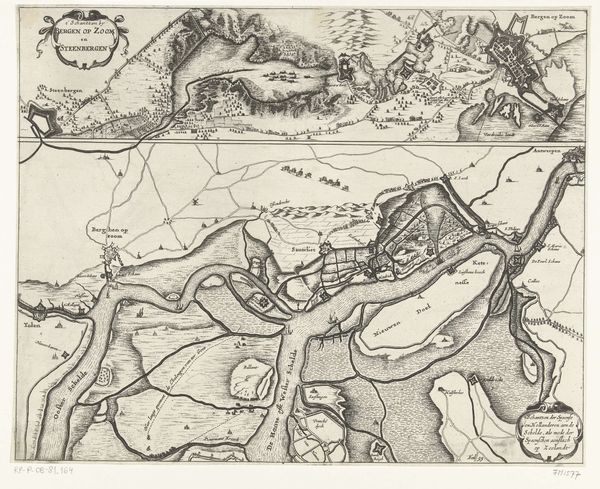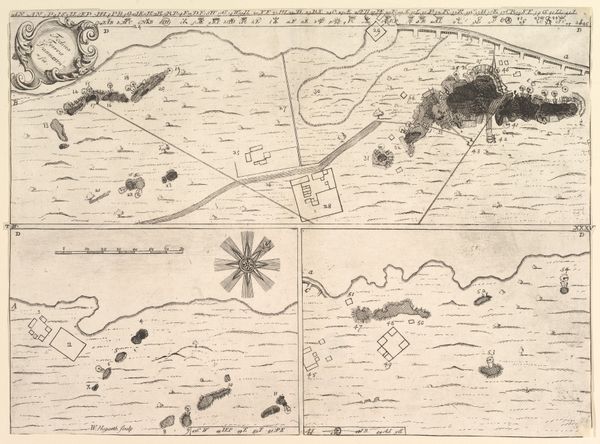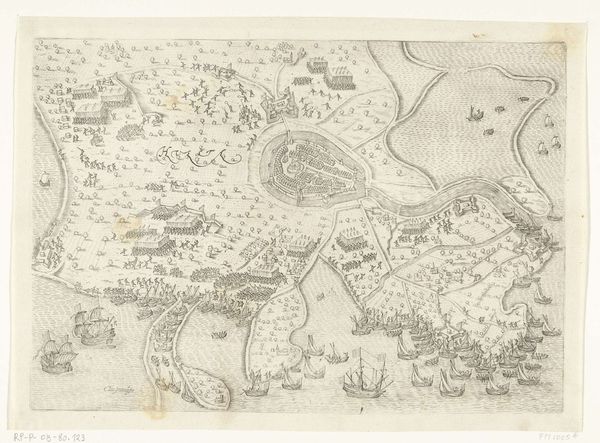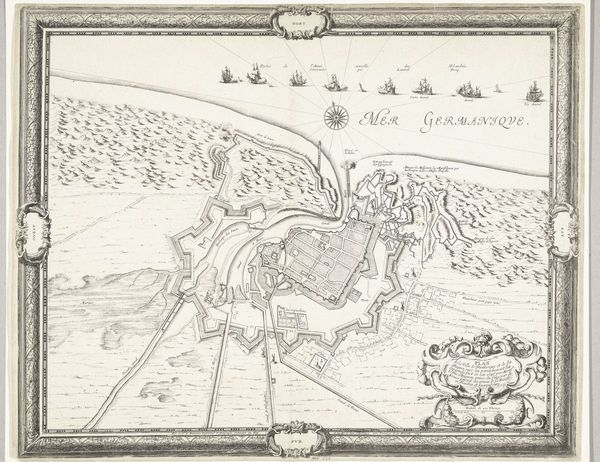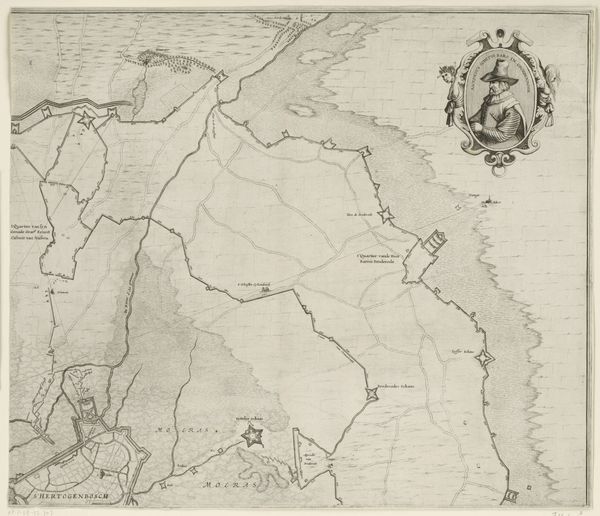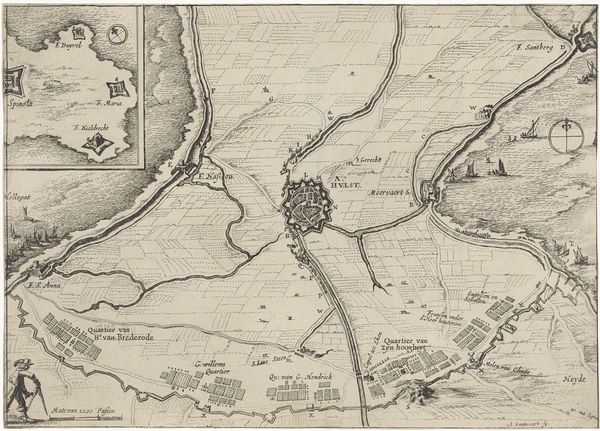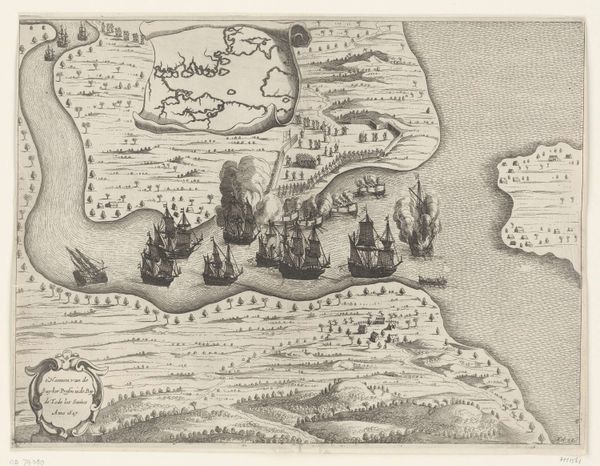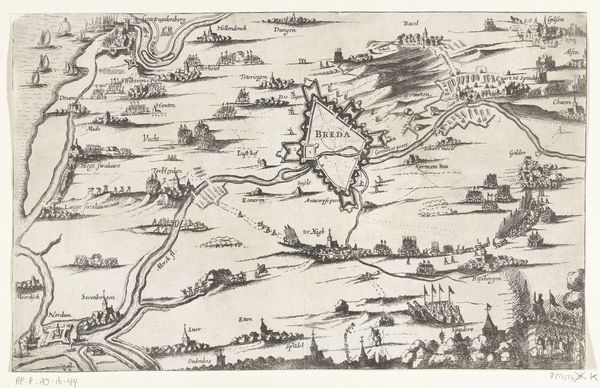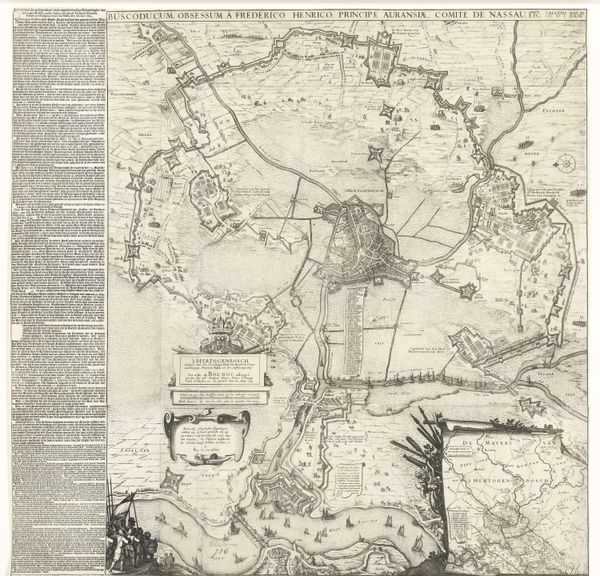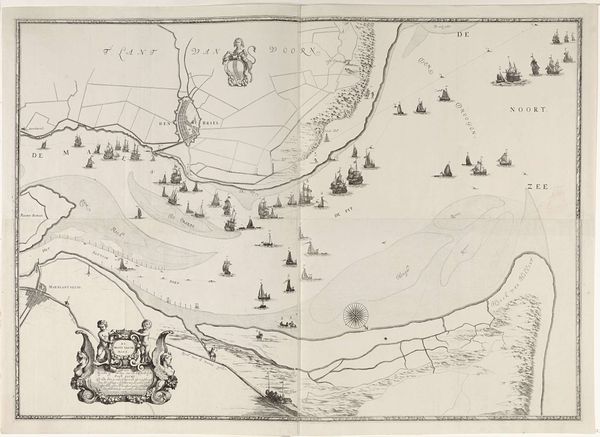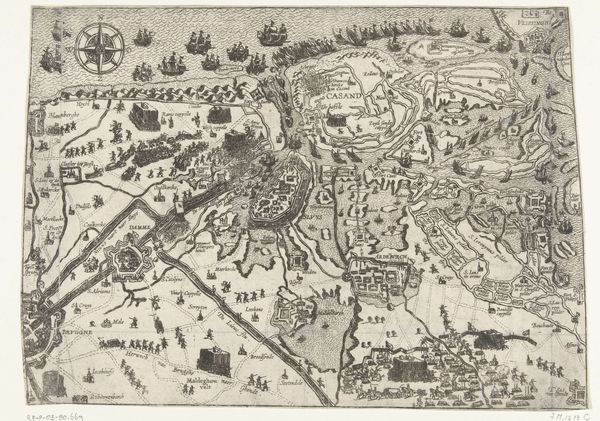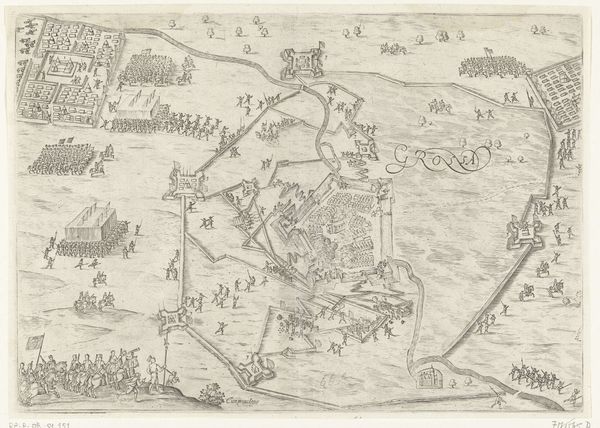
Beleg van Hulst door aartshertog Albrecht, 1596 1600 - 1610
0:00
0:00
drawing, print, ink, engraving
#
drawing
#
baroque
#
pen drawing
# print
#
pen illustration
#
pen sketch
#
old engraving style
#
landscape
#
perspective
#
ink line art
#
ink
#
geometric
#
orientalism
#
cityscape
#
engraving
Dimensions: height 223 mm, width 295 mm
Copyright: Rijks Museum: Open Domain
Editor: Here we have “Beleg van Hulst door aartshertog Albrecht, 1596,” made sometime between 1600 and 1610 by Bartholomeus Willemsz. Dolendo. It’s an engraving in ink. Looking at the level of detail here is astounding, and all from above like it’s satellite imagery. What jumps out to you? Art Historian: Indeed, the perspective is striking. What appears at first to be merely documentary, becomes incredibly compelling. It's not simply about showing *what* happened, but inviting us to consider the *how* and *why*. Do you notice the placement of Hulst, strategically positioned between waterways? Editor: Yes, the water surrounding it seems key to its geography and defense. I suppose all the ships floating along must've played some important roles too. Art Historian: Precisely. And notice who commissioned this piece, or for what context was such meticulous detail important? This engraving memorializes a siege led by Archduke Albrecht. How do you think Dolendo, or his patron, viewed the war and his subjects when rendering this violent capture as an aesthetic achievement? Editor: Well, knowing the context shifts things quite a bit, giving it almost propagandistic overtones… It really does glorify the siege, doesn't it? I'd missed that before, focusing so much on the technique alone. Art Historian: Exactly. And the technical skill is undeniable. But this isn’t just about aesthetics; it’s about power, control, and the deliberate construction of a narrative. Consider the ethics of celebrating military conquest during periods of intense social upheaval. How might those directly affected – the people of Hulst – have perceived such an image? Editor: I never considered how the depiction of violence is framed… thinking about those impacted is another dimension to interpreting historical works like this. Thanks, it's changed how I view the piece. Art Historian: And I've enjoyed your fresh perspective; thinking about technical artistry and geographical place! The dialogue is essential for uncovering such histories.
Comments
No comments
Be the first to comment and join the conversation on the ultimate creative platform.
